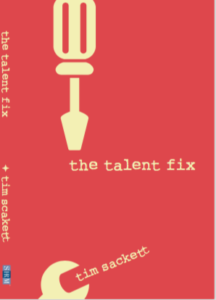Today on The Weekly Dose I let you know about some changes coming to Facebook and how Facebook is partnering with ATSs to make it easier for employers to get your jobs posted on your Facebook company page.
Facebook has long been that one person we’ve always wanted to dance with us, but they seemed uninterested in having anything to do with the recruiting community. The reality is, FB has more active users than any other social network and that means the potential for us to some serious hiring on FB has always been a dream of most TA pros.
Recently Facebook announced some partnerships with ATS providers SuccessFactors/SAP, JazzHR, Talentify, and Workable. While SuccessFactors, JazzHR, and Workable are all in the ATS space, Talentify is more of a CRM-like, programmatic job posting tool. Both Workable and JazzHR are strong SMB value ATS providers, while SuccessFactors wasn’t originally designed to be an ATS, but because of the acquisition by SAP has built out that functionality, although I think most using it probably feel that recruiting still isn’t its strongest point.
I’m not sure exactly why Facebook choose this group to start, but like most things, my guess it’s probably a combination of relationships being leveraged (hello, SAP), and just scrappiness by the smaller players mentioned to find a way to get this done.
So, what’s actually being done?
“Jackie Chang, head of Business Platform Partnerships at Facebook, said the social network will “continue to identify strategic companies” in order to help businesses hire and people find work. “We’re looking to grow these partnerships,” she said. “We know many businesses are already working with HR solutions providers to manage their hiring needs and we want to make it easier for businesses to tap into the tools they already use, and help more people find jobs.”
Also, from Chris Russell:
There are two ways that the new integrations will work – an onsite, “native apply” experience and an offsite “redirect” experience. In the native apply experience – the messenger popup will still occur.
Onsite, “native apply” experience:
-
- We have a Jobs XML Feed, which enables partners to publish job posts on behalf of employers directly on Facebook.
- Job seekers can apply to those roles directly on Facebook, and the application information is sent back to the partner.
- This allows employers to reach qualified candidates while staying connected to the systems they already use.
- Employers can also create jobs in their ATS, and publish that job to Facebook.
Offsite “redirect” experience:
-
- We have a Jobs XML Feed, which enables partners to publish job posts on behalf of employers directly on Facebook.
- Job seekers are redirected to the employer’s career site and can apply to the role on the employer’s career site.
- Employers can also create jobs in their Applicant Tracking System, and automatically publish that job to Facebook.
Very cool stuff, as Facebook has been one of the hardest nuts to crack when it comes to recruiting, and these integrations should make it easier for employers to start getting their jobs in front of FB users more easily. Facebook won’t be the holy grail for everyone, just as LinkedIn isn’t the holy grail for every employer either, but the potential is there for it to be a very good source for so many that don’t see the pools of talent they need on sites like LinkedIn, or other job boards.
Does your ATS have this integration, or are they working to make it happen? The only way to find out is to actually give them a call and ask that question!



